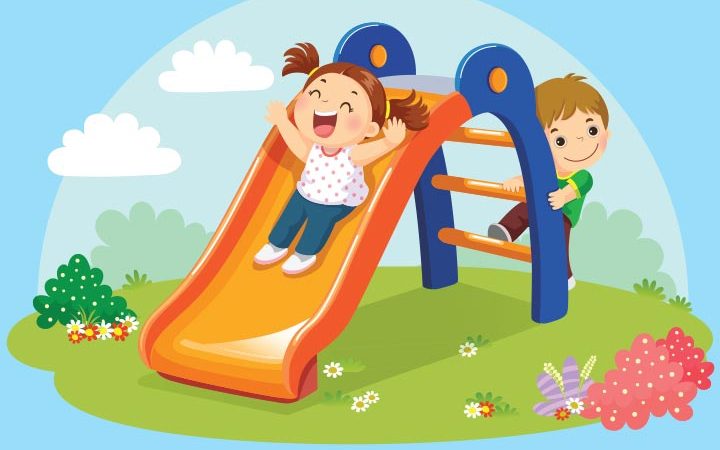A fun circle time activity promotes positive relationships and helps children develop stronger bonds with their peers. These activities are a creative way to keep preschoolers engaged, and each child can get the opportunity to feel equally involved as it is a platform that encourages positive interaction. Circle time fosters young minds and enhances their development.
Circle time activities could involve group reading, singing, or reciting poems (1). Keep reading for some of the best circle time activities that are fun and engaging as well.
Tips For Organizing Preschool Circle Time Activities
Here are some tips that you may follow to organize circle time activities for toddlers (2):
- Flexible circle time: Don’t always stick to the same time to perform any circle time activity. Being spontaneous can add excitement to circle time.
- Interest-based activities: You may plan activities that are specific to children’s interests. This helps in getting children excited and motivated for the circle time activities.
- Variety: Monotonous activities can get boring after a while. Therefore, you may keep experimenting with new activities every time.
- Exercise: Look up some easy and simple physical exercises that can be performed during circle time.
- Role designation: Have a new circle monitor every day, as it boosts their motivation to participate in the activities.
- Duration: Initially, kids may not be used to performing circle time activities, so they might get restless if it continues for too long. You may gradually extend the time (3).
- Participation: During circle time, you must encourage children to participate equally and make them feel as involved as possible.
25 Preschool Circle Time Activities
Here are some fun preschool circle time activity ideas that you may try (3):
1. Circle time singing
During this activity, kids can practice rhymes and songs. Circle time singing is an engaging activity that encourages every child to participate and sing their hearts out.
2. Creative circle formation
Come up with interesting ways to invite children to form a circle. For example, you may ask simple questions to kids, and once they answer, allow them to join the circle. Alternatively, children may also sing one line each of any song or rhyme before joining the circle.
3. Chants to move along and end the circle time
You can use a drum or clap your hands after each activity is done during circle time. This would keep the children excited. You can also choose a rhythm for each activity, such as clapping hands in a specific rhythm for the game “passing the parcel.”
4. Quiz
Use the circle time for a short round of the quiz. Prepare a list of interesting questions for children to enjoy while learning.
5. Musical chairs
Arrange chairs in a circle facing outward. Make sure you are short of one chair as compared to the number of students. Now play music and let the kids move around in a circle. When the music stops, they have to grab a seat. Whoever is not able to find a chair gets eliminated.
6. Picture pieces
Give the children a puzzle to solve. Sitting together in a circle to solve a puzzle can help them notice how others perform. As a result, children would be encouraged to perform faster.
7. Go!
For this movement activity, ask the children to stand in a circle. First, the volunteer has to make eye contact with a player, indicating to say “go.” Once they have received the command, the volunteer will slowly move toward the player. Meanwhile, the player makes eye contact with another player who will say “go” to make a spot for the volunteer and so on.
8. Story assembling
For this activity, you would need pictures of a story. Distribute pictures of this story to each child. Once they all have received a picture, they have to display it in front of them. Now ask them to form these pictures in the right order of the story.
9. Circle of silence
The volunteer stands in the center of the circle. Ask the children to pass a box containing marbles without making noise. If the volunteer points out where the noise came from, the child who gets caught would be the next leader of the game.
10. What’s new?
For this activity, you can bring in any new toy, parts of a game, stationery, or anything that would interest the children. Now, introduce these new materials or toys during circle time and explain how they should be used (5).
11. Greeting and welcoming
This activity promotes classroom community and manners. Teach children to welcome everyone to join the circle and learn how to greet each other.
12. Discuss children’s concerns
Circle time can be used to discuss queries or concerns of children. It can be about the ongoing classes, activities, or anything else they would like to express. If a child feels shy and wants to talk in privacy, it should be respected.
13. Reminder alert
You may also use circle time to remind the students of all the tasks assigned to them. This may include their homework, assignments, and other activities.
14. Differentiated learning
Through small groups of children can learn something different from their partners in the circle. Every child thinks differently and comes from a unique cultural background. Hence, it promotes the learning and development of a child both emotionally and academically.
15. Open ended conversations
Circle time can be a new “safe space” for the children to discuss anything that they want to. Let the discussion move in a circle, and each child would get to express their thoughts.
16. Group reading
Reading time can be done sitting in a circle. This can promote togetherness, and the children may feel comfortable and encouraged to read with their friends (1).
17. Word activity
Come up with a “word of the day” every day during circle time and let each child make a sentence using this word. For instance, if the word is “fruit,” each child would have to say a sentence with the word fruit in it, such as “I like to eat fruits.”
18. Game time
Use circle time to play a game that involves participation from each child, such as Chinese whisper, where the child has to whisper a word in the other’s ear, and the game continues so on. The last child has to tell the entire list of words without missing any.
19. Lunch circle
Circle time can also be used by children to share their lunch with each other while enjoying the company of their friends.
20. Story building
Ask each child to tell a sentence and let the next one build on to it, finally making these sentences into a short story. For example, if the first child says “the bear was hungry,” the next one has to say “the bear was hungry and looking for food,” and so on.
21. Discuss the schedule for the day
Circle time can be used to inform children about all the activities that lay ahead for the day. This may help them to remember the tasks better as they have the day’s schedule.
22. Class attendance
Convert the attendance line into a circle activity. Take a child’s name and let the other children answer if they are present or not.
23. Question and answer
Let the children ask questions about anything during circle time. Children may also ask and respond to each other. This activity not only helps in engaging them but promotes teamwork as well.
Circle time promotes togetherness. It allows children to interact with each other and provides a fun learning experience through these hands-on activities. In addition, these activities offer various other benefits such as improving attention span, social skills, adding value for the class community. Preschool circle time activities also strengthen bonds amongst students that may last a lifetime.
References:
MomJunction’s articles are written after analyzing the research works of expert authors and institutions. Our references consist of resources established by authorities in their respective fields. You can learn more about the authenticity of the information we present in our editorial policy.
The following two tabs change content below.




































